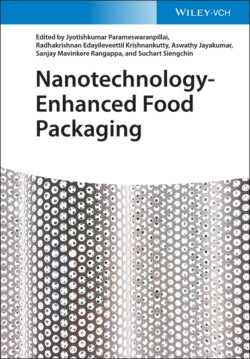Читать книгу Nanotechnology-Enhanced Food Packaging - Группа авторов - Страница 30
1.15 Usages of Nanotechnology in Traceability and Active Tags in Food and Drug Industry
ОглавлениеRadiofrequency recognition usually involves package stickers in food and drug or pharmaceutical industries. The brands are electronic radio-frequency sensor-based mechanisms used for transferring data from a tag connected to an object and automated recognition of the object. RFID is an improvement on previous manual tracking systems or bar codes. It is extremely robust and can work at extreme temperatures and pressures and can be detected over 100 m, and many tags can be played at the same time. Nanotechnology also allows for cost-effective RFID tags in sensor packaging. Smaller, more compact nano-enabling tags may be placed on thin labels [1–3, 55]. It is a fact that when concerning public health, an evaluation of the possible migration into food of packaging components and an evaluation of their potential danger are critical for a thorough risk assessment. However, very little research has been conducted so far on the impact of nanomaterials on absorption or possible association of food contact materials with nanomaterial-dependent food components [56]. Thin film transistor is the key part of RFID tags, and it can be embedded in food packages; a researcher came upon with cheaper printable thin film transistor made up of carbon nanotube-filled inks. It can be easily printed on papers and plastics [57].
